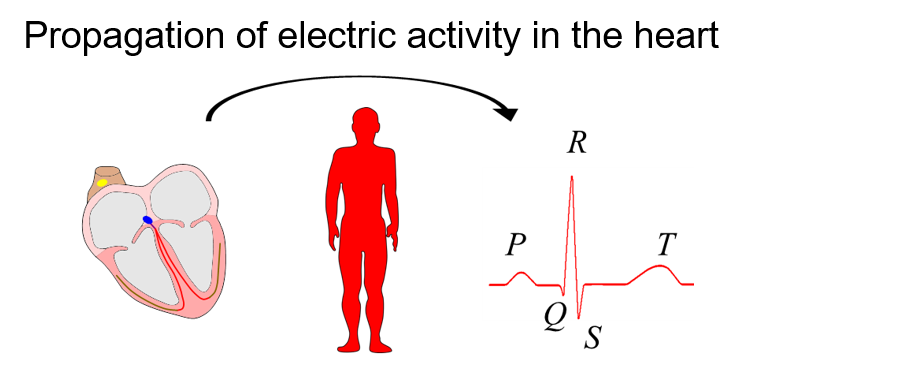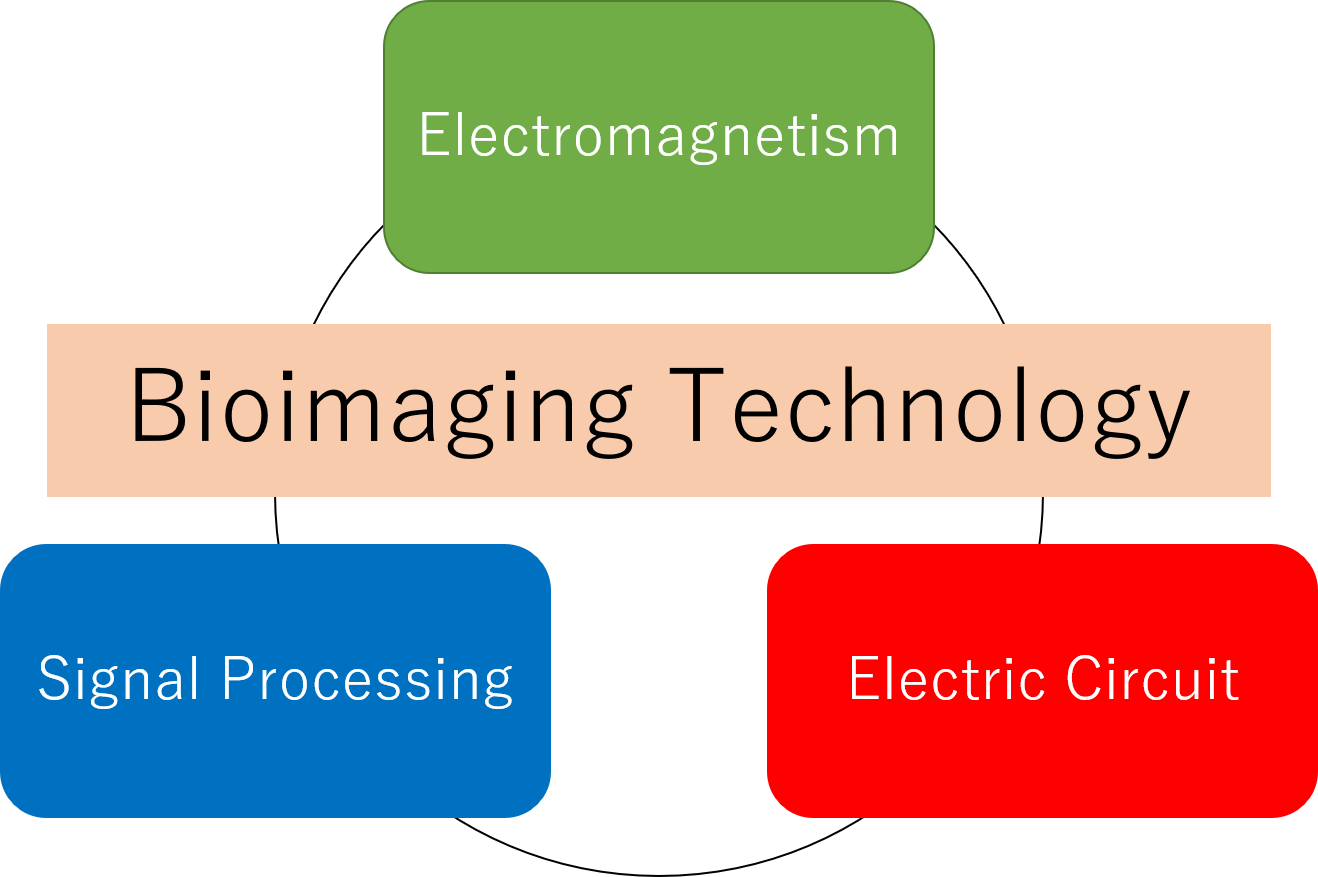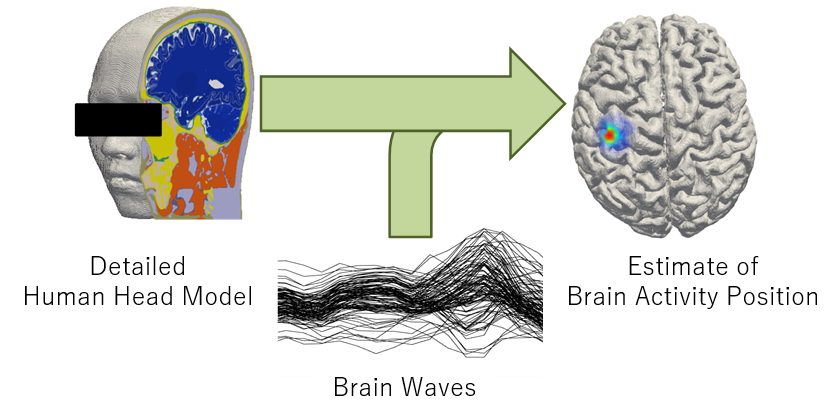Bio-imaging technology for ultra-high accurate ECG
An electrocardiogram (ECG) is a measurement of the electrical activity originated from the heart. By recording the ECG, cardiac diseases such as arrhythmia, which is caused by a disturbance in the rhythm of electrical signals flowing in the heart, can be detected at an early stage.

In our laboratory, we are developing in-vivo imaging technology by combining detailed human models constructed from medical images such as MRI and CT with our original electromagnetic simulation software.

Bio-imaging technology is based on electromagnetism, signal processing and electric circuits. It is applied to estimat the causes of cardiac diseases and the optimization of medical devices.

In recent years, the performance of computers has improved, and there have been many efforts to solve various medical problems by simulating the electrical phenomena of the heart. However, these methods are computationally inefficient and require supercomputers, so there is a need to establish low-cost methods. Our in-vivo imaging technology is revolutionary not only because it overcomes this problem, but also because it can improve the accuracy of electrocardiography, which is dependent on the experience of individual doctors.
Estimating brain part where neuronal activity originates
Electroencephalogram (EEG) is also an estimation of the electrical activity of the brain. Therefore, by applying electromagnetic field analysis technology, it is possible to reproduce the electrical activity patterns in the brain. In our laboratory, we are working to establish a method for fast and accurate estimation of which part of the brain is active by constructing a detailed head model of each patient from brain images such as MRI and predicting brain electrical activity from EEG.

Currently, techniques for brain stimulus-response is used for preoperative diagnosis of brain diseases. In addition to this, by estimating the location of brain activity, we expect to develop into a variety of fields such as advanced medicine, such as identifying lesions and investigating brain functions. We are also proposing a wide range of other applications. In the future, telepathy may not be a dream.